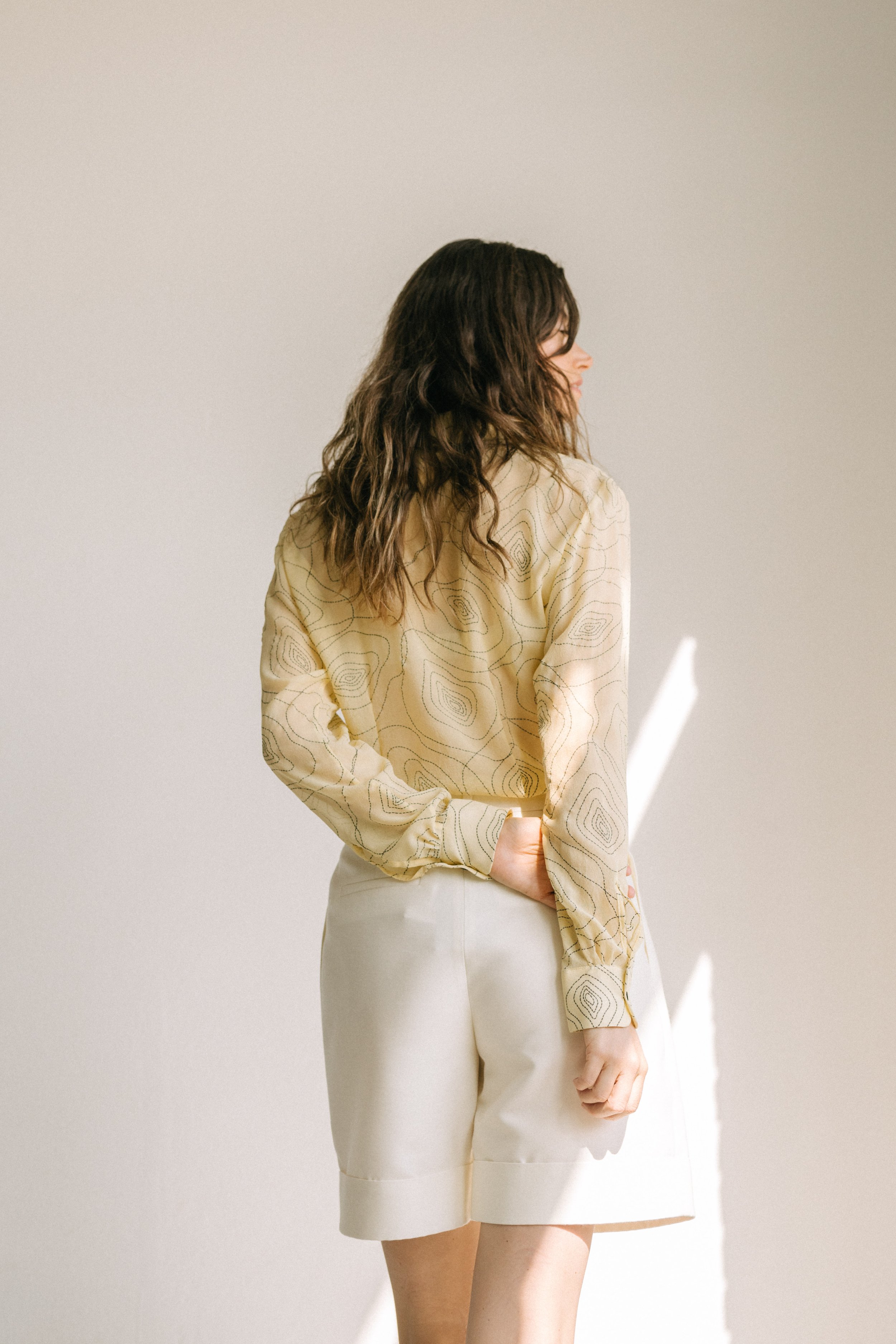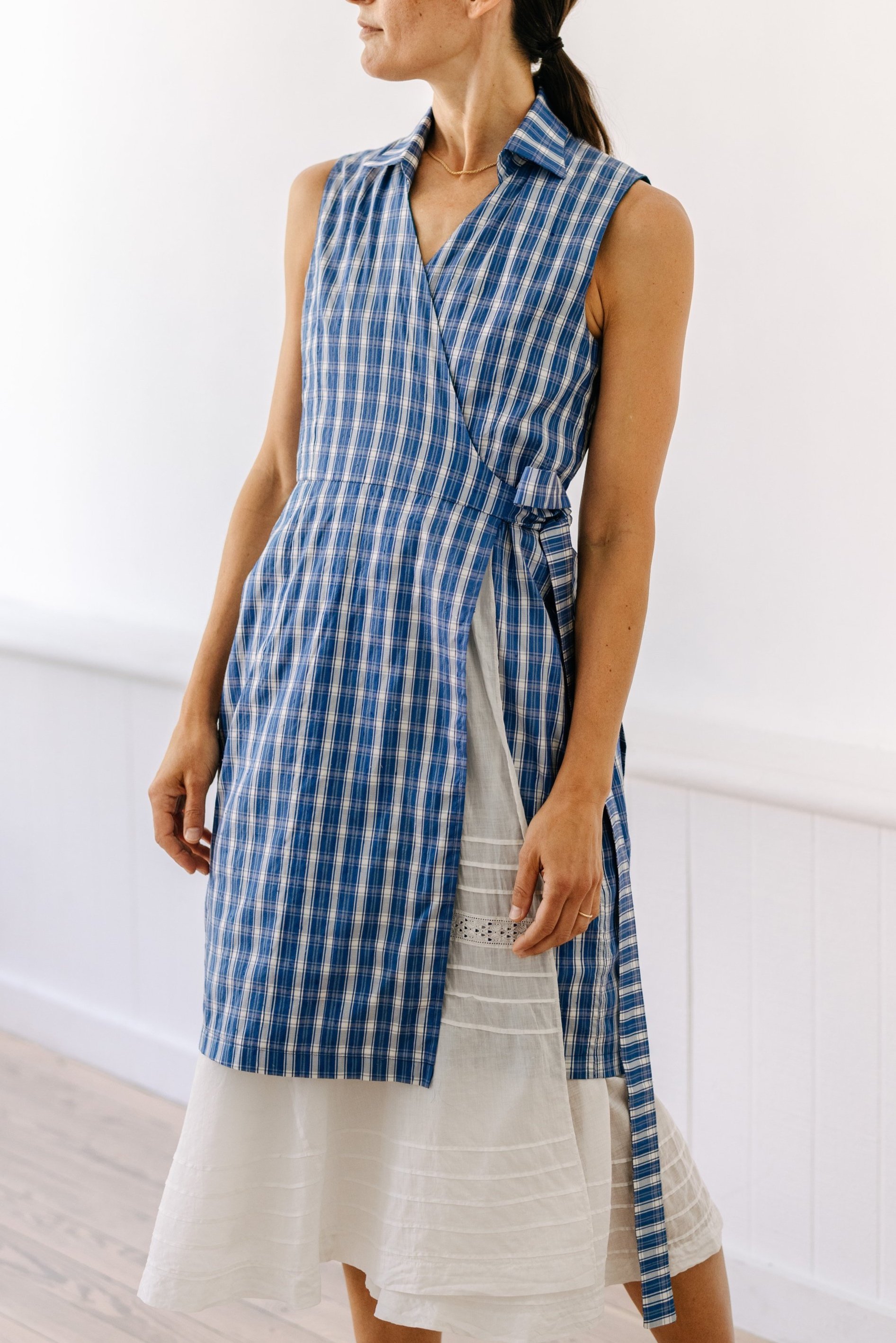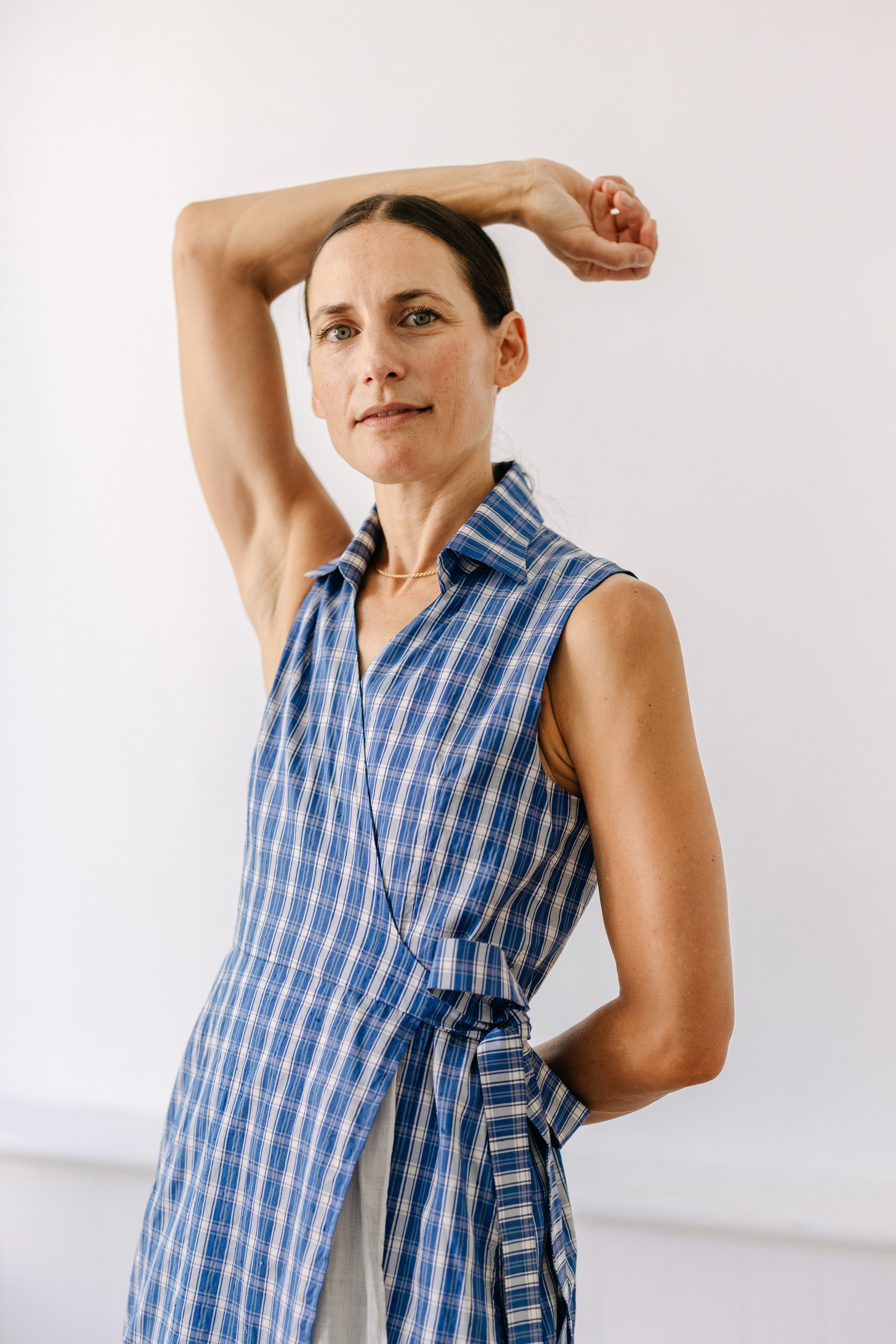 Image 1 of 5
Image 1 of 5

 Image 2 of 5
Image 2 of 5

 Image 3 of 5
Image 3 of 5

 Image 4 of 5
Image 4 of 5

 Image 5 of 5
Image 5 of 5






Jersey Blouse - 1940s Floral Rayon & 1930s Ocean Pearl
Effortlessly bright, bold and cheerful, yet elegant. Not your average jersey shirt, details include elegant silhouette hourglass shaping at the waist and a no-gape CurveShape placket (our unique solution to prevent gapes in stretchy fabrics!). A highly versatile piece, for casual or formal settings. Begging to be worn with this season's statement denim.
Fabric
Rayon jersey from the late 1940s. Blue-green (turquoise) with flowers of delicate pink and orange. The fabric is stretchy but substantial. Not at all flimsy.
This exceptional rayon jersey, dating from the late 1940s, is an exemplar of Rayon’s value proposition for the fashion industry (alas, I have rarely felt a modern synthetic jersey that was as luxe and weighty as this fabric). Rayon was the very first man-made fiber used in clothing, and was advertised as having “all the features of silk, at one-third the cost.” This fabric lives up to that, and then some. The drape and body of this fabric made me seriously question whether it was actually a silk jersey (an expensive, rarer fabric, even today). It is a very fine rayon fabric and is extremely comfortable. It was likely made in America!
One of the features that helps date this fabric to the 1940s is its turquoise color. Turquoise was not widely in use in dress fabrics until the late 1940s or early 1950s. In addition, its bright, clear, multicolored print is a hallmark of the post-war period, in which styles were (understandably) more joyful and exuberant.
Buttons
1920s/30s 'Ultra Kraft' blue-dyed mother of pearl buttons from an old button factory called B. Schwanda and Son Ocean Pearl Button Factory in Southern New England. In the 1960s the company went bankrupt due to the popularity of cheap, plastic buttons. Prior to that, its pearl would have been harvested from American waters.
Sizing Details
This blouse is a Medium, which means it is designed to accommodate U.S. sizes 2 through 8. View our detailed size chart and int'l sizes here. The measurements of this specific garment accommodate a bust of up to 39" and a waist of up to 33".
Effortlessly bright, bold and cheerful, yet elegant. Not your average jersey shirt, details include elegant silhouette hourglass shaping at the waist and a no-gape CurveShape placket (our unique solution to prevent gapes in stretchy fabrics!). A highly versatile piece, for casual or formal settings. Begging to be worn with this season's statement denim.
Fabric
Rayon jersey from the late 1940s. Blue-green (turquoise) with flowers of delicate pink and orange. The fabric is stretchy but substantial. Not at all flimsy.
This exceptional rayon jersey, dating from the late 1940s, is an exemplar of Rayon’s value proposition for the fashion industry (alas, I have rarely felt a modern synthetic jersey that was as luxe and weighty as this fabric). Rayon was the very first man-made fiber used in clothing, and was advertised as having “all the features of silk, at one-third the cost.” This fabric lives up to that, and then some. The drape and body of this fabric made me seriously question whether it was actually a silk jersey (an expensive, rarer fabric, even today). It is a very fine rayon fabric and is extremely comfortable. It was likely made in America!
One of the features that helps date this fabric to the 1940s is its turquoise color. Turquoise was not widely in use in dress fabrics until the late 1940s or early 1950s. In addition, its bright, clear, multicolored print is a hallmark of the post-war period, in which styles were (understandably) more joyful and exuberant.
Buttons
1920s/30s 'Ultra Kraft' blue-dyed mother of pearl buttons from an old button factory called B. Schwanda and Son Ocean Pearl Button Factory in Southern New England. In the 1960s the company went bankrupt due to the popularity of cheap, plastic buttons. Prior to that, its pearl would have been harvested from American waters.
Sizing Details
This blouse is a Medium, which means it is designed to accommodate U.S. sizes 2 through 8. View our detailed size chart and int'l sizes here. The measurements of this specific garment accommodate a bust of up to 39" and a waist of up to 33".




























